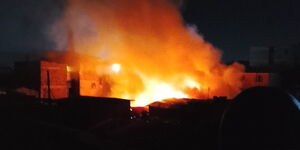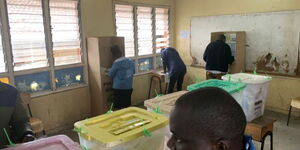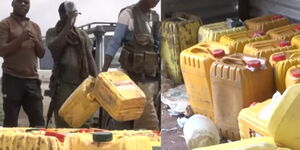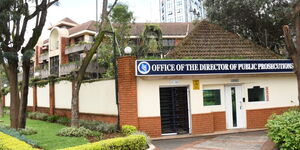The current debate surrounding the passing of X influencer Albert Ojwang took a fresh twist when it emerged that key CCTV footage at the Central Police Station was tampered with.
The Independent Policing Oversight Authority (IPOA) deputy chairperson, Ann Wanjiku, revealed this when she appeared before the Senate on Wednesday, a revelation that is likely to impact the ongoing investigations.
But can a CCTV outage be deleted? Or better still, can such footage be admitted as evidence in a court of law? Kenyans.co.ke takes you through all these tough but important questions.
Can CCTV footage be recovered?
Deleted CCTV footage can be recovered in many cases, thanks to advancements in data recovery technology and forensic tools.
Most CCTV systems store footage on digital storage devices such as DVRs (Digital Video Recorders), NVRs (Network Video Recorders), or memory cards. When footage is deleted, it is not immediately erased from the system but instead marked as space available for new data, meaning recovery is possible if the deleted segment has not yet been overwritten.
"CCTV Forensic and data recovery involves retrieving and analysing data from a crime scene. It can be done through various means, such as extracting information from a CCTV’s hard drive or examining CCTV footage," according to East Africa Tech Solutions.
Recovery begins with securing the storage device to prevent further data loss. Forensic investigators use specialised software to scan the hard drive or memory card for traces of deleted video files.
These tools can retrieve video fragments, timestamps, and sometimes even metadata like camera ID and recording duration. In Kenya, forensic experts at the Directorate of Criminal Investigations (DCI) or private digital forensics firms are usually called upon to handle such sensitive recovery operations.
Tools Used
Deleted CCTV footage can often be recovered using advanced forensic tools such as Magnet AXIOM and Magnet WITNESS, which specialise in extracting and analysing video from DVRs and NVRs, including deleted files and metadata. DVR Examiner, which is widely used in law enforcement, can recover footage directly from hard drives without needing the original CCTV system.
According to Oxygen Forensics, Cellebrite UFED is also used when footage is stored on removable devices like SD cards or USBs. For broader digital recovery tasks, tools like X-Ways Forensics and Autopsy (open-source) are employed to scan storage for unallocated or deleted video files. Field teams may use VIP 2.0 to extract and export surveillance footage on-site. In Kenya, such tools are used by the DCI’s Cybercrime Unit, private forensic labs, and court-appointed experts during sensitive investigations.
Use in Court
Yes, CCTV footage can be used and admitted as evidence in a court of law. Additionally, it can be used to aid investigations.
For recovered footage to be admissible in court, every step must be thoroughly documented. The chain of custody records who handled the evidence, when, and how it was processed. Any gap or inconsistency can render the video inadmissible.
In a landmark appeal, the High Court in Nairobi upheld convictions in a bribery case involving DCI officers after EACC investigators presented certified CCTV footage from their Kabete offices.
The footage, retrieved on November 28, 2018, was transferred to an official drive and sealed on DVD, accompanied by a formal certificate under Section 106B of the Evidence Act. In court, the video clips clearly showed the suspects entering and exiting the offices, confirming their presence and involvement alongside their official vehicle, and an identifying officer confirmed their identities on-screen.
"Any information from an electronic record that is printed, stored, or copied using a computer shall be treated as a valid document and is admissible in court without needing the original, provided certain legal conditions are met,'' the section reads in part.
The court relied heavily on the authenticated CCTV evidence to corroborate audio recordings and eyewitness testimony. The visual proof linked suspects to the scene, supporting allegations that the officers had demanded and received a Ksh200,000 bribe.
The footage's integrity was upheld under the country’s forensic and evidentiary standards, helping the court reject defense claims of mistaken identity and uphold the guilty verdict. Ultimately, the thorough documentation and certification of the CCTV footage, including chain-of-custody protocols, proved decisive in affirming the convictions.
In summary, deleted CCTV footage is not necessarily lost forever, but recovery is time-sensitive, technically complex, and legally delicate. In Kenya, using forensic practices (secure imaging, expert tools, chain of custody) is essential to transform deleted or damaged video into credible evidence that can support investigations and withstand legal scrutiny.












